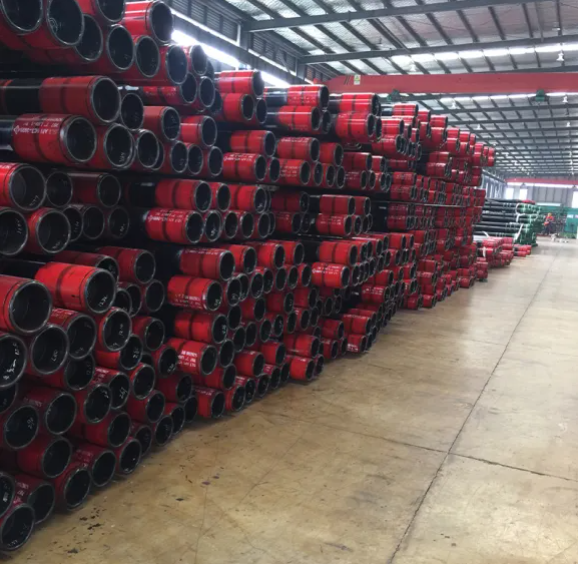Oil Country Tubular Goods (OCTG) play a crucial role in the exploration and extraction of oil and gas. Among these components, OCTG casing stands out as a fundamental element in ensuring the integrity and efficiency of wells. 
1. Defining OCTG Casing:
OCTG casing refers to a set of steel pipes designed to surround and protect the wellbore during drilling and oil or gas production.
These pipes are crucial for maintaining the structural integrity of the well, preventing collapse, and facilitating efficient extraction processes.
2. Key Components and Features:
a. Steel Composition:
b. Threaded Connections:
c. Length and Sizes:
d. Grades and Specifications:
Casing pipes are available in different grades and specifications, each designed to meet specific performance and environmental conditions. Common grades include H40, J55, K55, N80, and P110.
3. Functions of OCTG Casing:
a. Structural Support:
b. Wellbore Isolation:
c. Fluid Containment:
It helps contain and manage the fluids produced during extraction, including oil, gas, and various by-products.
d. Preventing Contamination:
4. OCTG Casing Installation Process:
a. Drilling the Wellbore:
b. Running the Casing:
c. Cementing:
d. Pressure Testing:
5. Significance in Well Construction:
OCTG casing is a linchpin in the construction and operation of oil and gas wells.
It enhances well stability, protecting against collapses and ensuring a secure pathway for oil and gas extraction.
By isolating different geological formations, it contributes to efficient reservoir management and prevents cross-contamination.
The selection of appropriate grades and specifications ensures that the casing can withstand the challenging conditions encountered in oil and gas reservoirs.
Conclusion:
In conclusion, OCTG casing is an integral component in the intricate process of constructing and operating oil and gas wells. Its robust design, threaded connections, and diverse specifications make it a versatile and indispensable element in ensuring the success, safety, and longevity of well operations. As the oil and gas industry continues to evolve, OCTG casing remains a foundational element, supporting the exploration and extraction efforts that drive global energy production.
Related articles:Advantages of Deep Groove Ball BearingsUnderstanding the Function and Benefits of Belleville Disc SpringsHow does a universal joint work?What Are Forklift Sideshift Attachments?Boost Your Power with a Kubota Diesel EngineWhich is better CV joints or universal joints?Where is tyre coupling used?





Comments
0Related Articles
By Hou
111
0
0
By CC
112
0
0
By Hou
102
0
0
By May
118
0
0
By CC
107
0
0
By May
104
0
0
By CC
104
0
0
By May
100
0
0